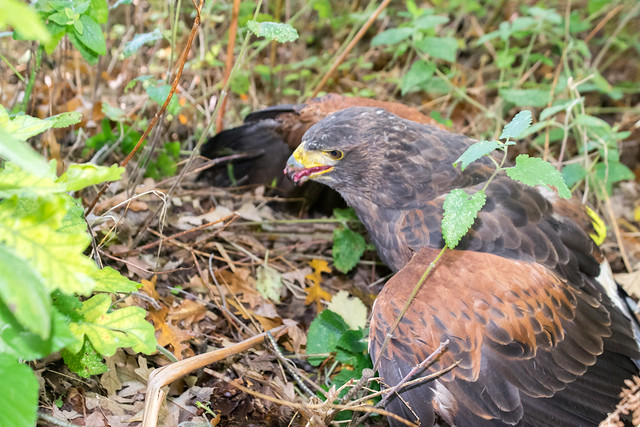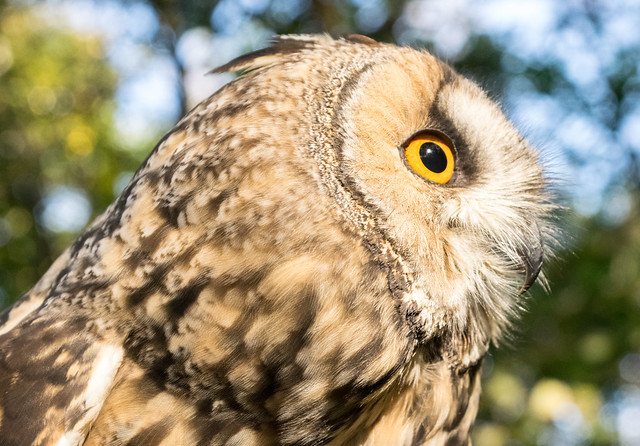A few days ago Tracy and I had an amazing day out with raptors, hosted by Gerard of East Sussex Falconry at Herstmonceux Castle. Here's Ash the Harris Hawk, a beautiful bird:
The castle was a great setting for flying the birds, with beautiful grounds and woodlands:
Here's Ash's brother, Cedar, posing in front of the castle:
We spent some time with each of the Harris Hawks in the grounds, getting used to handling them and having them land on us:
Then we moved into the woods, which is ideal territory for the hawks to hunt in:
Plenty of other places to perch in the woods as well as our hands, so meat treats were definitely required to keep the birds with us.
However, Ash did manage to catch a vole, some other kind of rodent and nearly got a hen pheasant as well! Here he is with one of his catches, and in the first photo you can see his nictitating membrane, caught by chance in the camera flash - this is like a third eyelid, but translucent so the bird can see through it.
It was amazing watching them hunt - there was a big difference in speed compared to when they were flying to our hands for a treat, and in all cases we had no idea the prey was there until the bird went for it, having spotted his target from a significant distance.
Gerard explained the birds and their behaviour as we went along, and it was clear how well he knew the birds, and how much they trusted him too.
As well as flying the hawks, we also flew two owls. Here's Halo the Barn Owl:
He was struggling a bit in the wind, and sometimes landed in slightly random places as a result!
Tracy said her head was a bit sore after this! But I think it was worth it for the photo... :-)
Halo also let me get some nice in-flight photos such as this sequence of him coming in to land:
Next we met Bramble, a Long-eared Owl:
We took Bramble into the woods, where she impressed us with her silent fly-bys.
After the owls, it was time for us to meet a couple of falcons. First up was Neo, a Lanner Falcon:
He didn't sit with us for long, all he really wanted to do was fly!
Gerard got him interested by twirling a lure round on a rope, which prompted some acrobatic flying from Neo!
Before long he got hold of the lure, and took it to the ground to eat:
After which he got a Quail's head as a reward for his performance - slightly gruesome, but just what he wanted!
After Neo, we got to meet Atom, a Merlin - the smallest type of Falcon in the UK
His challenge was to chase a lure being held up by this quad-copter drone!
No problem for him though, he got straight in there!
He brought the lure back to the ground to eat, and waited for us to catch up with him.
All in all, an excellent day, and one I can recommend to anyone! Visit East Sussex Falconry to find out more...
Also, I too quite a few more photos than the ones used in this blog, you can see them in a Flickr album here.
Mike
Click here to read the rest of this post.



























































